Pipe cleaning - the main options for this type of work
During the operation of the sewage system in houses and apartments on the internal walls of pipelines there is often a plaque, which over time can turn into a blockage, which can be very, very difficult to remove. There are many different options for work, it can be a simple treatment with boiling water, hydrodynamic cleaning of pipes, and many other ways, it all depends on the scale of the problem and the means that you have at hand at the moment.
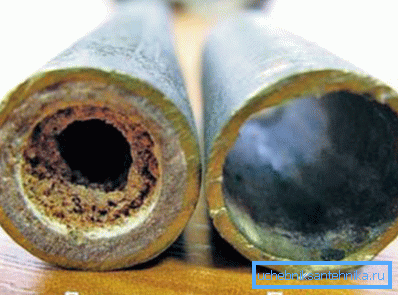
The main types of fight against blockages
Most often, when troubleshooting sewage problems, the following options are used:
| Household appliances | You can apply several solutions that help in the fight against deposits on the pipes. They are prepared from compositions that are in each house and cost a little, so that this method is available in almost any situation. |
| Special Chemical Compounds | On sale you can find a variety of different tools, both domestic and foreign production, with which you can clean the pipes at home. When choosing, you should be guided by the instructions on the package, as each option may have its own terms of use. |
| Vantuz | With the help of this device it is possible to clean the sewage system with your own hands, if the blockage is small and the deposit has not yet managed to harden. The plunger can be both in a classic version and in a more modern version - with a pneumatic system, which significantly increases the efficiency of its use. |
| Plumbing cable | Without a doubt, one of the most popular options, with which you can effectively deal with the most different types of blockages - from simple to very complex. There are many configurations that differ in diameter, type of nozzles and length of the device. |
| Pipe Cleaning Equipment | Without a doubt, the most effective option of all considered, which is most often used by professionals when working on cleaning systems of various diameters. The use of special installations allows you to work very quickly and efficiently. |
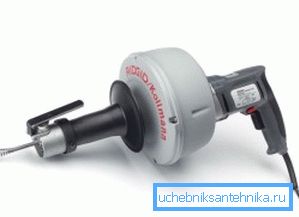
How to conduct work
Consider how to organize the workflow when using one or another option. Choose a specific solution you need, based on their current conditions and the nature of the blockage.
Anyway, you can try to fix the problem on your own, and if you do not succeed, you will have to involve specialists involved in the provision of sewer cleaning services.
Household tools and special chemical compounds
A fairly simple option with which you can effectively deal with fat, soap and other types of plaque.
We can single out several of the most common solutions that have proven themselves well among those who have encountered a similar problem:
- The simplest option is as follows: a kettle of boiling water is poured into the system, after which it is necessary to pump the pipeline vigorously through the valve. Next, 1 cup of soda is poured into the hole and another 600-700 grams of boiling water is poured. Soda forms an alkaline environment, loosening, removing plaque and killing all bacteria, if necessary, the procedure can be repeated several times.
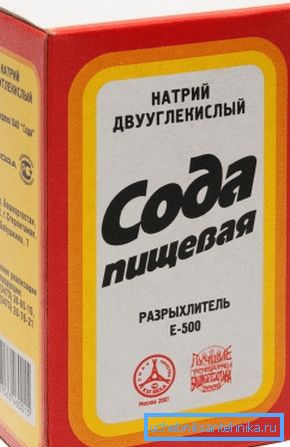
- Another effective option is as follows: half a glass of baking soda and half a glass of vinegar are poured into the pipeline, as a result of the interaction of these components a vigorous reaction occurs, so it is better to close the hole with a stopper and leave it for 2 hours. After that, 2-3 liters of boiling water are poured into the system to remove residual residue.
- The best option is to fill in half a glass of salt and soda, after which the system should be left for 7-8 hours, without allowing any liquids to drain. After the time it is necessary to rinse the pipes with boiling water.
- If you use a ready-made chemical composition to combat plaque and blockages, then the instructions on the packaging will tell you all the nuances of its use.. Conditions may vary significantly depending on the type of product, so be sure to read all the recommendations.
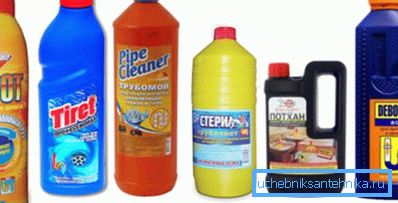
Tip! It is better to avoid problems and to pour 3-5 liters of boiling water into the pipes at least once a month, it effectively dissolves both fat and soap deposits. This simple method of prevention significantly reduces the likelihood of plaque.
Vantuz
A simple tool for cleaning pipes, with which you can eliminate many problems.
Works are carried out as follows:
- The overflow holes in the system, if any, are closed first.
- Next, a plunger is placed on the drain hole and water is poured so that it covers the rubber element.
- Then rhythmic movements are made without detachment of the device from the surface, after which the plunger sharply detaches from the surface, this allows to stir up and destroy the sewage blockages.
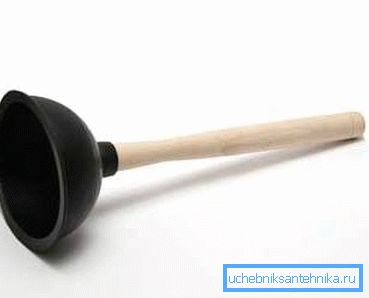
Plumbing cable
Simple, but the most popular equipment for cleaning pipes, works are carried out as follows:
- First you should remove the siphon, it will simplify the work.
- Next, the end of the cable is introduced into the pipeline and the progressive movements pushes farther and farther.
- When you encounter a blockage, the intensity of the rotation of the cable must be increased to break through and destroy it.
- After completion of the work, pipes are spilled with hot water.
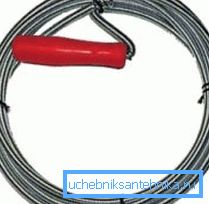
Tip! Cables can be completed with various nozzles to increase the efficiency of work in certain conditions.
Special equipment
Hydrodynamic installation for cleaning pipes allows you to eliminate even the most complex problems, working with it has many advantages:
- Cleaning takes place very quickly and efficiently.
- The pipe cleaning machine treats surfaces very carefully, preventing damage to the system.
- During the work no harmful and chemically active substances are used.
- With the help of such equipment, work can be carried out even at low temperatures.
Due to the high cost of purchasing the installation for private use is impractical, so they are most often used by professionals.
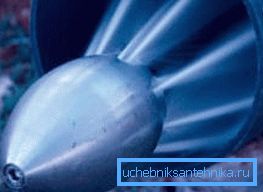
Conclusion
It is important to carry out all work neatly, without disrupting the process, as cleaning is much easier than replacing damaged pipes. The video in this article will vividly show the features of some options for removing blockages from communications.